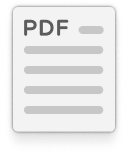Artificial intelligence (AI) is becoming increasingly popular in the field of education, particularly among students. The Internet reports that ‘86% of students have adopted artificial intelligence at school’ and ‘79% of young people use AI in their studies’. But what about teachers? They still seem reluctant to embrace the new technologies. GoStudent reveals that only half of them regularly use AI. So it's high time to bring educational practices into line with students' expectations. How can AI be used by teachers? An overview of digital tools for increasing teacher productivity and lesson effectiveness.
Why is AI important for teachers?
Save time and creativity
Teachers spend a large part of their day on time-consuming tasks, such as marking homework, creating course materials and managing timetables. With AI, these tasks can be completed in no time at all. The result? A drastic reduction in extra work at home.
Personalising the learning experience for each student
One of the biggest challenges in the classroom? Responding to the varied needs of your students. Thanks to AI, you can adopt a tailor-made approach. This involves not only exercises adapted to the level of each pupil, but also AI-based tools capable of supporting certain disorders (such as dyslexia). This personalisation of learning helps to reduce performance gaps and promote more inclusive and/or differentiated education.
Improving educational effectiveness
Numerous digital tools incorporating AI are being developed to facilitate learning. Virtual assistants, for example, help to empower learners. For their part, applications for simulating experiments make learning fun and keep learners interested.
The best AI tools for teachers
Tools for creating educational content
To help you create your teaching content, you can opt for :
- Customised lesson plan generators: these allow you to design lesson plans tailored to the levels and objectives of your students. All with activity ideas and useful resources. Easy Peasy IA is very effective.
- Software for creating interactive learning materials: perfect for creating dynamic presentations, interactive quizzes or engaging videos. Canva Pro has many interesting features.
- PDF editing tools: these allow you to edit a wide range of PDF files. With PDFSmart, for example, you can easily create a PDF document, as well as edit, merge, split or rotate existing documents.
Assessment and marking tools
Correcting papers takes up an enormous amount of a teacher's time. What's more, it's usually personal time spent at home. Here are a few AI tools to make assessment easier:
- Automatic marking systems: these automatically mark papers, whether for multiple-choice questionnaires or written answers, while providing personalised feedback. Gradescope is used by more than 140,000 university lecturers.
- Tools for analysing student performance: these identify the strengths and weaknesses of each student.
- Quiz generators: these can be used to create quizzes to assess student performance. ClassPoint AI, for example, generates a quiz from PowerPoint slides.
Teaching assistance tools
As we have seen, using AI can improve teaching practices:
- Virtual assistants for classroom management: they can answer questions, carry out activities or perform specific tasks (such as reading aloud). Alexa, although best known for its use in the home, can also be used in education.
- Tools to help children with learning disabilities: even though DYS disorders are the subject of a government plan, schools are still poorly adapted to them. Fortunately, artificial intelligence exists. Thanks to Glaaster, a dyslexic child can take a photo of his or her lesson and wait for the AI-powered tool to adapt the text for better comprehension.
Communication and collaboration tools
Teachers are also in contact with other people, such as parents. Here are a few tools to improve collaboration:
- Parent communication platforms: these facilitate communication between teachers and parents (student progress, homework, school events, etc.). ClassDojo has already been adopted by over 50 million pupils and parents.
- Collaboration tools for teachers: these enable them to work together to co-create resources, plan lessons or exchange best practice. Microsoft Teams for Education, designed to help with collaboration, is a very comprehensive tool.
- PDF management software: this makes it easier to annotate or share PDF documents. With its annotation and compression features, PDFSmart is an excellent option.
How can you effectively integrate AI into your teaching methods?
Before integrating AI, ask yourself what your priorities are. Save time? Personalise learning? Improve student engagement? Or all three? Having a clear vision helps you to choose the right tools, those that are adapted to your needs.
Next, you need to train yourself in these new tools, but also train your students. Remember to make them aware of the ethical issues and the limits of AI! This is important.
Finally, measure the effectiveness of the tools you use. Observe your students' progress, gather their feedback and adjust your practices to achieve maximum results.
The challenges and limits of AI in education
Integrating AI has many positive aspects, but also a few negative ones. In particular, there are concerns about privacy and the collection of sensitive data. Guaranteeing the security and confidentiality of students‘ and teachers’ information is vital. You therefore need to ensure that the tools used have robust protection policies that comply with regulations.
Secondly, algorithms can reflect or amplify biases in the data used to train them. This can lead to inequalities in recommendations or evaluations. You need to be extra vigilant to reduce these risks.
AI for teachers, conclusion
New technologies, used wisely, are excellent for helping teachers, but also students. While there are a multitude of AI tools available, some are also more generalist and comprehensive, such as MagicSchool, the AI platform most widely used and appreciated by schools around the world. It can be used to plan lessons, correct assessments and communicate clearly. It can also boost student results and develop literacy with responsible AI experiences.






